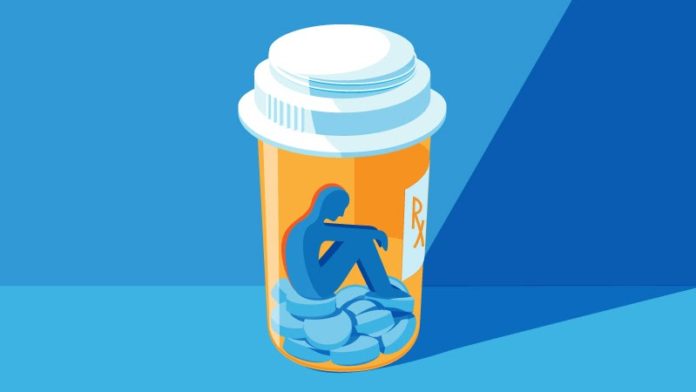By Erica Nahmad
August 31, 2020
August 31st is International Overdose Awareness Day, a day dedicated to raising awareness of overdose and reducing the stigma of a drug-related death globally.
Sadly, for many people, the day is about more than just awareness.
For the tens of thousands of people who have lost a loved one to drug overdose, this day is also about helping families cope with the lasting impact and grief associated with losing a friend or family member to overdose. And for the Latinx community, the risk of a drug overdose is growing at a rapid and alarming pace.
What started as a day of awareness in Australia nearly 20 years ago has blown up into a global campaign with events occurring in approximately 40 countries worldwide. It’s uplifting to see so many people mobilize for such an important cause. Still, it’s also a sign of the times and the frightening fact that drug-related deaths — particularly opioid overdose cases — are rising.
Globally, we know that drug abuse is a big problem. According to the most recent World Drug Report released by the United Nations Office on Drugs and Crime (UNODC), an estimated 585,000 people died due to drug use in 2017.
In the United States alone, over 67,000 drug overdose deaths occurred in 2018, according to the Centers for Disease Control and Prevention (CDC).
And among the Latinx and Hispanic communities in America, the numbers are even more alarming. Data shows that opioid overdose deaths among Latinos are surging nationwide.
The Latinx Community and Illicit Drug Use
According to SAMHSA’s 2018 National Survey on Drug Use and Health (NSDUH), 1.1 million Hispanic/Latino youth used illicit drugs in the past year, over 200,000 people misused opioids specifically in that same period.
While drug abuse is always concerning, it’s exponentially alarming because it puts the population at risk for other dangerous behavior, such as engaging in unsafe sexual practices linked to Human Immunodeficiency Virus (HIV), Hepatitis C virus (HCV), and sexually transmitted infections (STI).
For opioids, in particular, you often read about this epidemic and the public health emergency as a “white problem” that impacts Caucasians more than minorities. And while the overall death toll may be higher for whites, the alarming statistics indicate an increasing rate of drug-related deaths among Latinos and blacks.
According to data from the CDC, Latino fatalities increased by 52.5 % between 2014 and 2016 compared to 45.8 % for whites.
Even more concerning than the fatality rate, the same data shows that 92 % of Hispanic/Latino youth with a substance use disorder did not receive treatment in a specialty facility.
This data is shining a light on aspects of drug addiction that many experts did not initially recognize — that opioid addiction is not an exclusively or even predominantly white problem. It’s a growing problem among minority groups, as well.
Why Is Drug Addiction So Prevalent Among Latinos?
Several issues at play have contributed to the growing number of opioid addictions and drug-related deaths among the Latinx community.
For starters, the Latinx experience with opioids has been largely overlooked by experts and health officials, as opioid addiction has long been considered a “white” problem. By not acknowledging Latinos battling drug addictions’ unique obstacles, that community is being denied the attention and treatment they need to overcome their habits. Similarly, research has shown that the Latinx community certainly faces its own set of obstacles where drug abuse is concerned.
The fact that 92 % of Hispanic/Latino youth with a drug addiction did not receive the treatment they needed is alarming and unacceptable. But the real question is why haven’t they received that treatment, where white addicts are more likely to be treated for the same addiction?
According to NPR, after conducting interviews with nearly two dozen current and former drug users and their family members, “language and cultural barriers and even fear of deportation could be limiting the access of Latinos to life-saving treatment.”
It appears that both the websites and informational packets outlining available treatment and the treatment itself are often not available in Spanish, making it challenging for Latinos to benefit from the treatment options available.
Some of those interviewed also described sitting through entire counseling sessions and not understanding or following much of what was being offered to them. And despite waiting, the translator they needed never arrived at their treatment session.
There’s also the fear factor: fear of being deported (if they are not a U.S. citizen) or fear of incarceration for illicit drugs, rather than viewing treatment as an option after asking for help. As a result of these factors — from implicit bias to language barriers and fears of deportation — the number of opioid deaths per year nearly doubled for Latinx people.
The good news is that now, we’re finally talking about how this opioid epidemic is impacting the Latinx community in ways experts have never addressed before.
“It’s a little bit bittersweet that this hasn’t been addressed years before. But it’s good that we’re talking about treatment rather than incarceration, and that this is a medical illness rather than a moral shortcoming,” explains Dr. Chinazo Cunningham, who works at a clinic affiliated with the Montefiore Medical Center in the Bronx, in New York City.
In addition to increased discussion and increased awareness, organizations and efforts are being made to address this disparity and provide much-needed care and attention to Latinx drug addicts.
For example, SAMHSA’s National Network to Eliminate Disparities in Behavioral Health (NNED) works to offer much-needed training and resources for community-based organizations like the Puerto Rican Organization for Community Education and Economic Development, Inc. (PROCEED). This training aims to expand the ability of community organizations to provide counseling and treatment services for Hispanic/Latino populations.
To learn more about International Overdose Awareness Day and how you can get involved to help a loved one or help those in need in the Latinx community, visit https://www.overdoseday.com.

